Horror of the Seas - Does Nemo Disappear?
What happens in the oceans we do not see with our own eyes, the sea is a distant holiday destination for many people. We have little awareness of fishing methods and the suffering they cause. The seabed will be destroyed in the long term, biodiversity will be taken away. A rethink is also necessary from an economic point of view, as severe financial losses can be expected from the disappearance of fish stocks. Researchers predict a collapse of the ecosystem. According to current data, 90% of the world's fish stocks are maximally fished or overfished, and the future of the habitat is acutely threatened. This makes it all the more urgent to educate people whose demand can have an impact on fishing quotas.
The architecture of this exhibition is a pavilion, which can be found at a special world exhibition. This is a temporary architecture that must be completely dismantled after an exhibition period of three months. Solid materials such as concrete are therefore unsuitable. The pavilion is supported by a complex steel structure that follows the Voronoi algorithm. This calculates a polygonal pattern for any number of points. This can be found in nature: in the wings of a dragonfly, in the drawing of a sea turtle. The reflection on the surface of the sea reminds of it and even a fishing net has a certain resemblance with this pattern - which closes the circle.
Currently, not even one percent of the world's seas are protected. Greenpeace demands 40 percent.

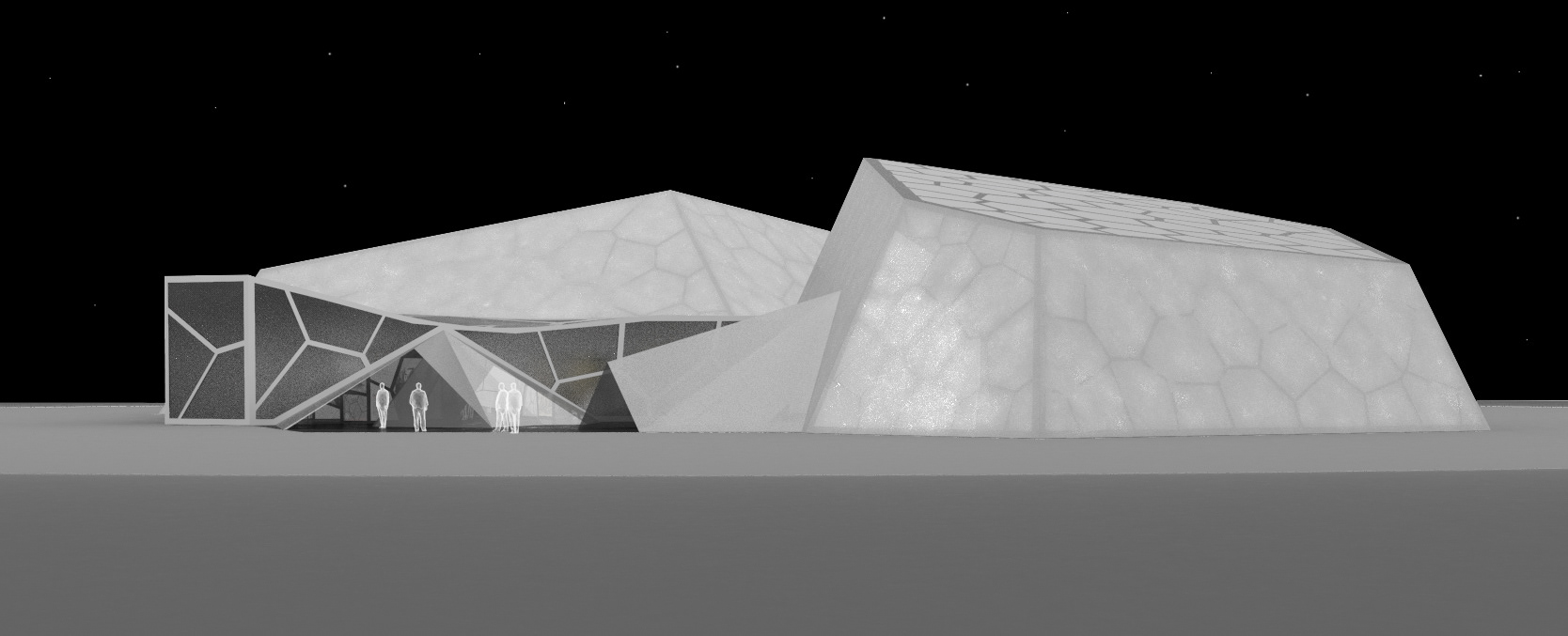
The wavy roof thus refers equally to an ejected net on the high seas and to the sea itself, depending on the viewing angle. The visitor gets the impression of being a marine animal under water and being part of the horrors that afflict the seas. Two exhibition chambers are surrounded by high walls that mark a protective zone. Visually, this is modelled on the barnacle, a tiny crustacean that builds calcareous shells around its fragile body. The walls indicate a solution to the dilemma of overfishing: a global network of marine protected areas.
Entrance and exit are next to each other. This signals: there is a solution, there is hope. They are made of a stretched textile reminiscent of ejected nets. This is where the change of perspective to marine life begins for the visitor. But instead of dying inside the oversized net like a by-catch, at the end of the exhibition the visitor comes back to freedom with new insights.
Scientists warn that by 2048 all edible fish species could be commercially exhausted.
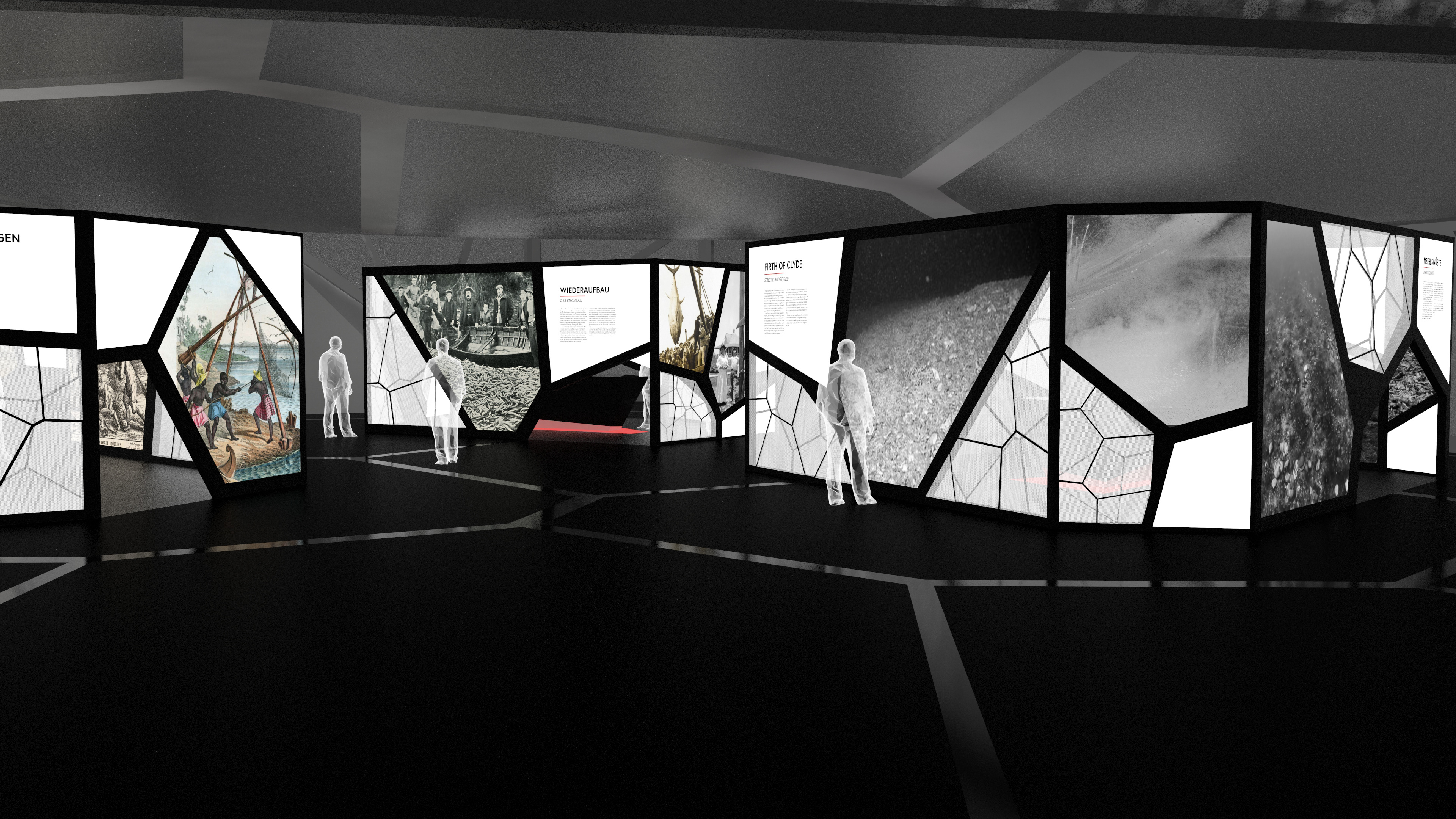

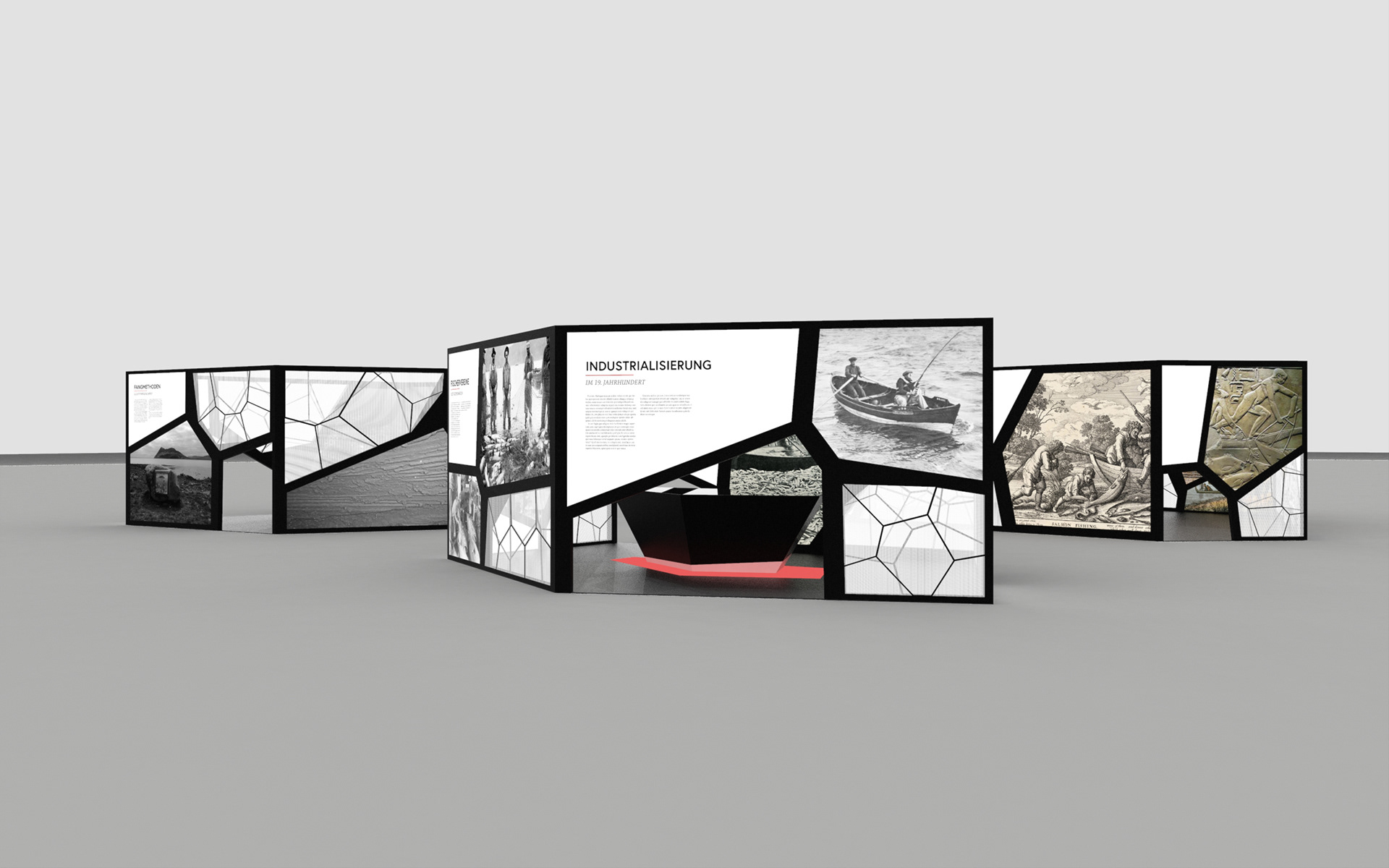
The history of the horrors of the seas divides the exhibition into four thematic chambers. The first chamber gives an historical outline of fishing, so that the visitor can understand what the state of the seas was like at the beginning of industrialisation, full of wealth and diversity.
More is caught than can grow back through natural reproduction.



The second chamber tells of today's trapping methods, of the destruction they leave behind and of the social, ecological and economic consequences. This is what is known as collateral damage, which is thrown dead overboard because it has no value for fishermen. Therefore, this room is accompanied by ghostly projections and a memorial wall.
Per kilo of crabs, up to 8 kilos of small crabs and other animals are caught and injured or thrown dead back into the sea.
To catch 211 dolphinfish, 54 longlines with a total of 43 000 hooks were needed - the collateral damage was horrible:
468 olive bastard turtles,
20 turtles,
408 deep-sea stingrays,
47 manta rays (...),
413 silky sharks,
24 thresher sharks,
13 smooth hammerhead sharks,
6 crocodile sharks,
4 whitetip deep sea sharks,
68 pacific fanfish,
34 striped merline,
32 yellowfin tunas,
22 blue Merline,
11 wahoos,
8 swordfish and
4 moonfish.
Callum Roberts 2013. Der Mensch und das Meer. Warum der größte Lebensraum der Erde in Gefahr ist. München: 463f.
468 olive bastard turtles,
20 turtles,
408 deep-sea stingrays,
47 manta rays (...),
413 silky sharks,
24 thresher sharks,
13 smooth hammerhead sharks,
6 crocodile sharks,
4 whitetip deep sea sharks,
68 pacific fanfish,
34 striped merline,
32 yellowfin tunas,
22 blue Merline,
11 wahoos,
8 swordfish and
4 moonfish.
Callum Roberts 2013. Der Mensch und das Meer. Warum der größte Lebensraum der Erde in Gefahr ist. München: 463f.

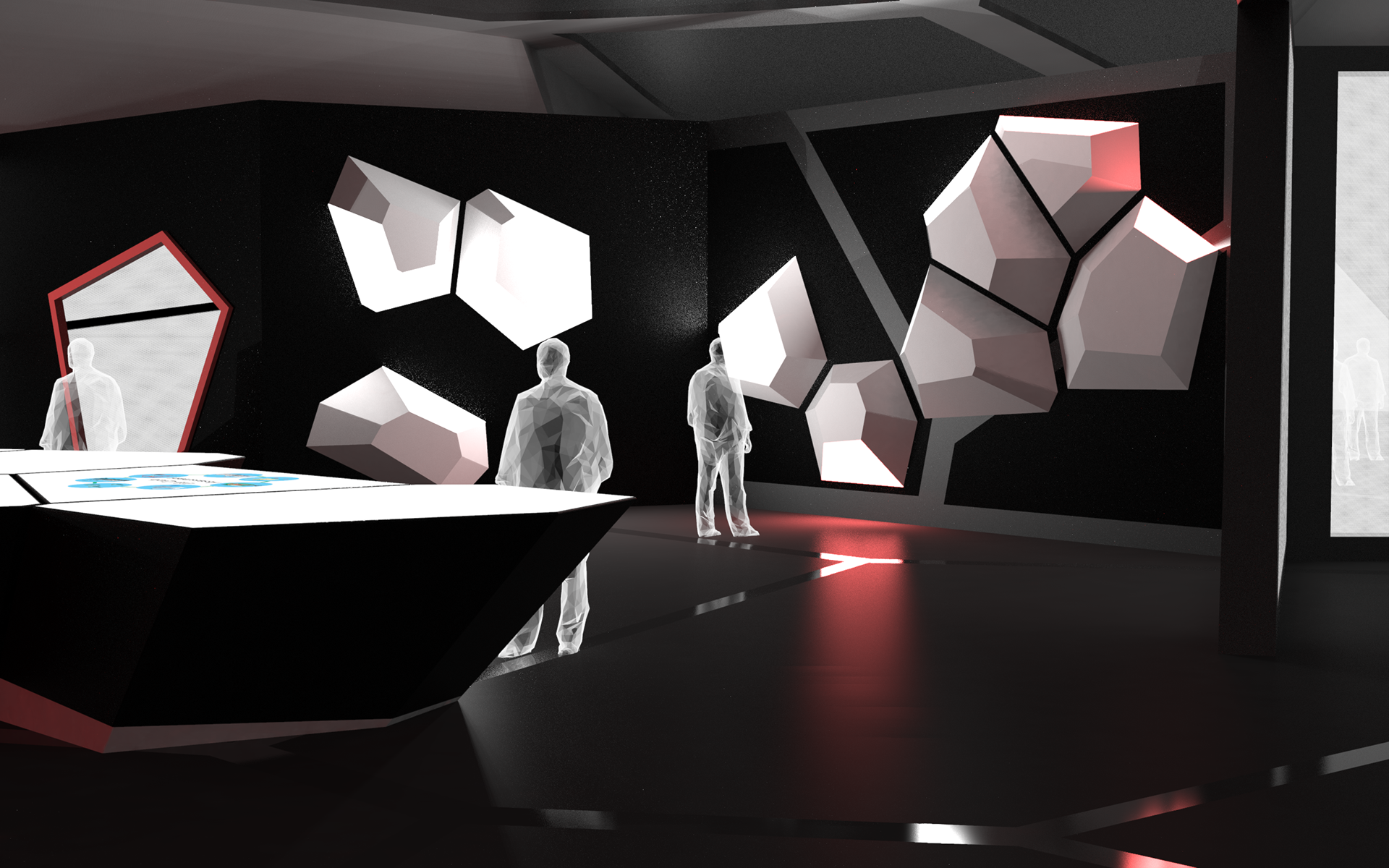
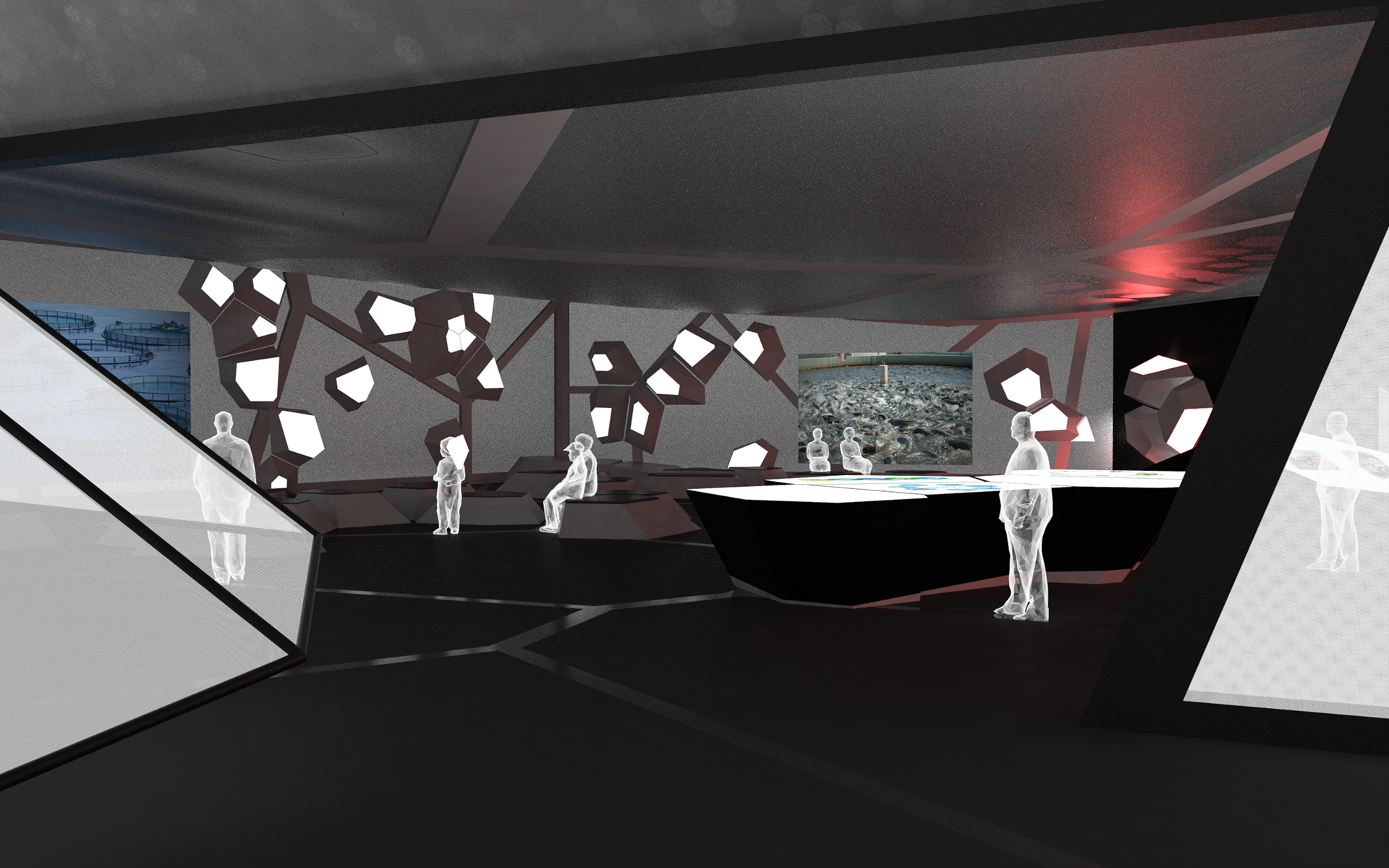
The third chamber is concerned with current solutions such as aquaculture and MSC and ASC seals, which tackle the issue of overfishing but do not yet offer a paradigm solution. Last but not least, the consumer also plays a decisive role here.
Short-term profit stands before long-term use.
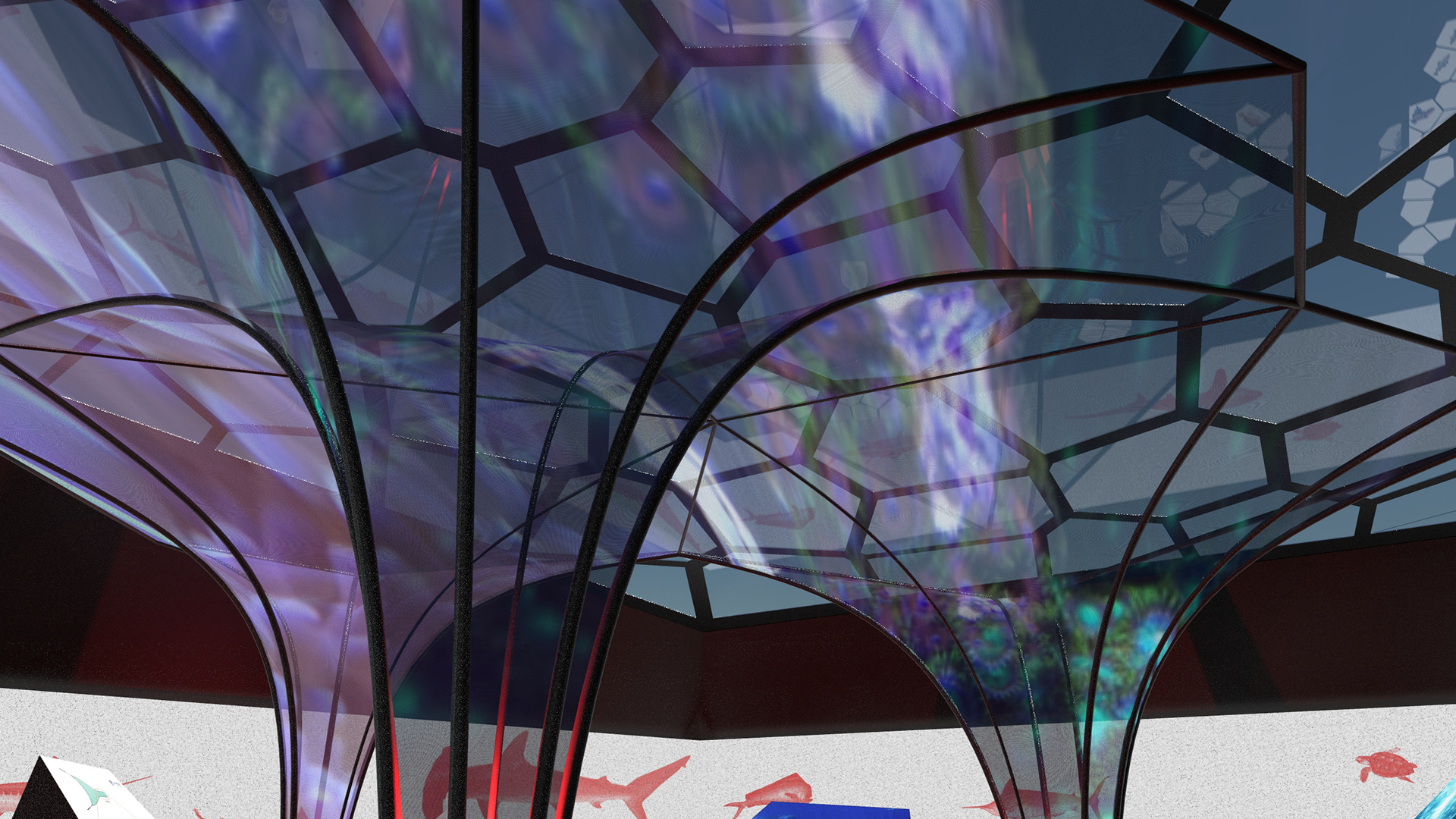


Afterwards the visitor is faced with the decision, metaphorically before the crossroads. Does he want to look behind the veil of ignorance? Then the last, colourful chamber reveals itself, symbolising the diversity that has been regained. This requires the establishment of global marine protected areas and strict monitoring of the oceans. But it's always worth it.
Legal catch quotas often far exceed scientists' recommendations.
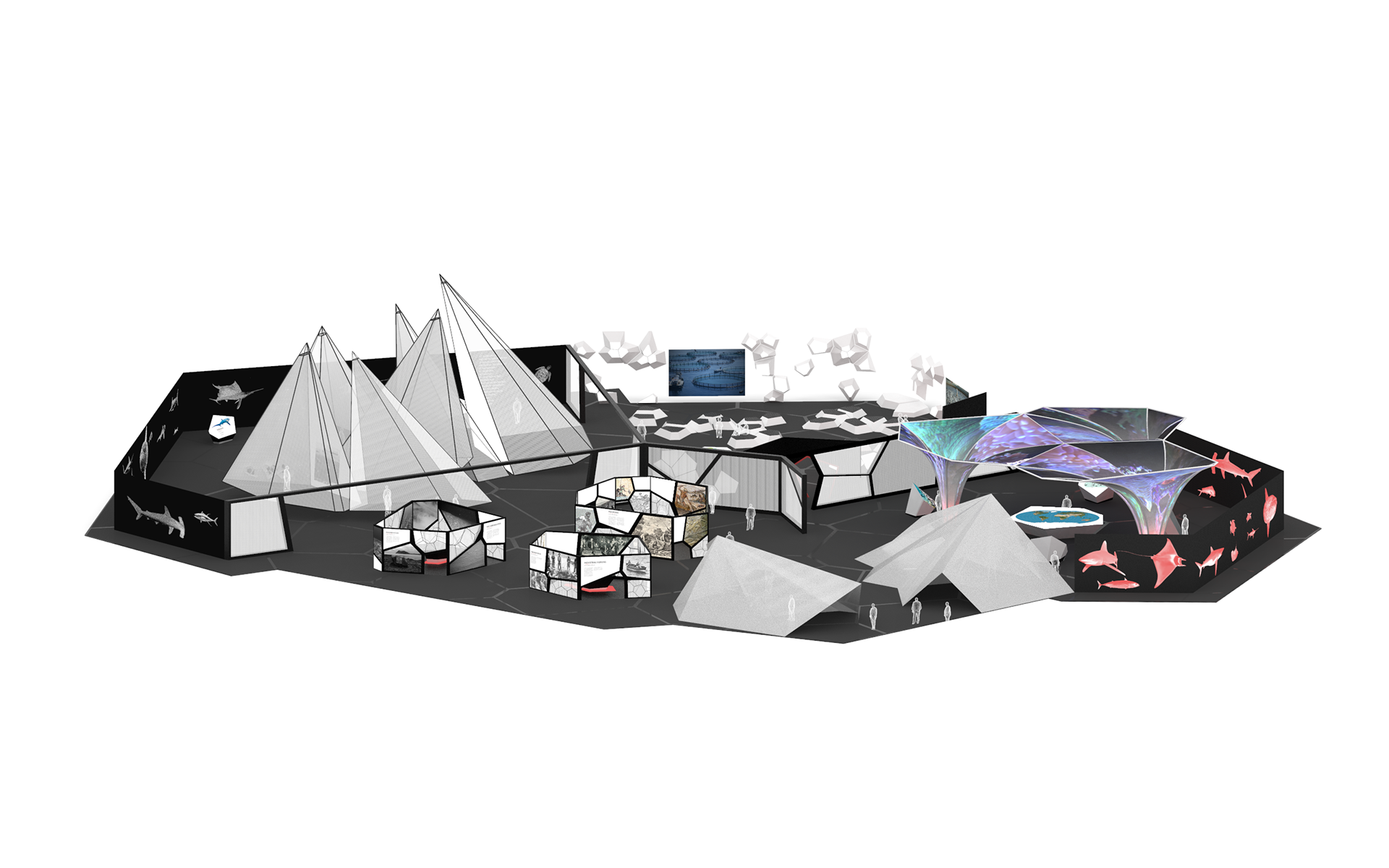
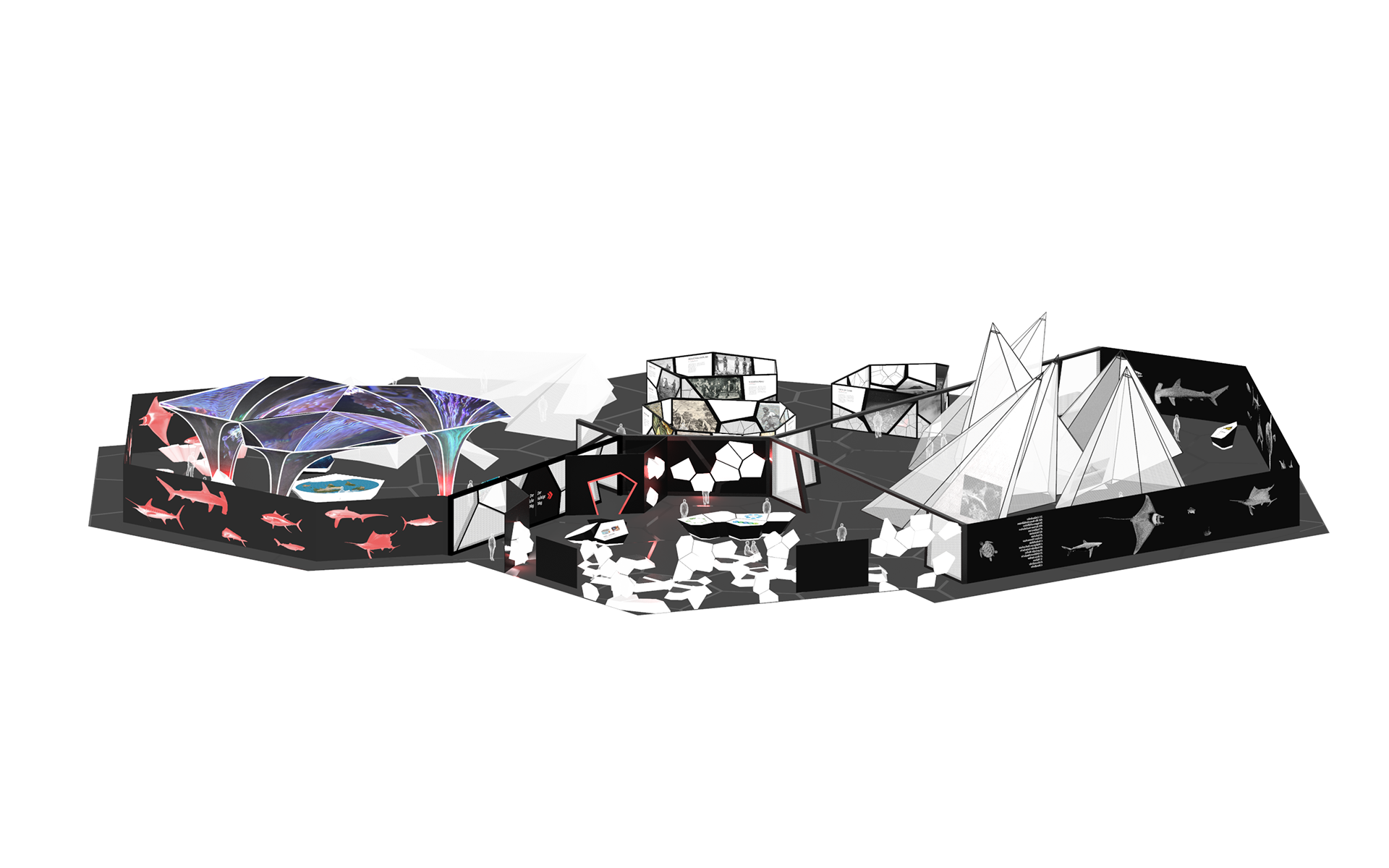
Sustainable use of the seas is economically possible and even profitable.
The floor plan consists of five voronoi chambers. Together they form a unit and remind us of Pangaea, the ancient continent, when our five continents were still a coherent mass 300 million years ago. Instead of land masses, however, water masses are meant here: 70% of the earth is covered by water and forms the world sea. The floor plan stands metaphorically for the ocean of the world, which must be protected.
This protection is achieved through the establishment of a global network of marine protected areas.
Two chambers are surrounded by walls rising from the sea. One could think of them as saving islands, but they are rather modelled on the common barnacle that builds calcareous plates to protect their fragile bodies.
Two chambers are surrounded by walls rising from the sea. One could think of them as saving islands, but they are rather modelled on the common barnacle that builds calcareous plates to protect their fragile bodies.


Fortunately, there is a simple remedy that can solve some problems at once: Marine protected areas.
All in all, 40% of the ground plan area is protected, because researchers and nature conservation organisations demand this value for the oceans. However, it would not make much sense to protect a single large spot; rather, a large number of these zones should be built at a certain distance from each other. For this reason, the chambers have also been declared protection zones which are not directly adjacent to each other. Finally, each protected area strengthens the surrounding sea and has a positive effect on the return of fish populations. Put simply, the protection of these two zones leads to the protection of all.
